Testing Nitram Powdered & Liquid Charcoals
Charcoal artists will be delighted to know that popular and well established Nitram brand came out with two innovative products this year: liquid and powdered charcoals. We are testing them both to see what they can do and how they compare with other products such as watercolour and Indian ink.
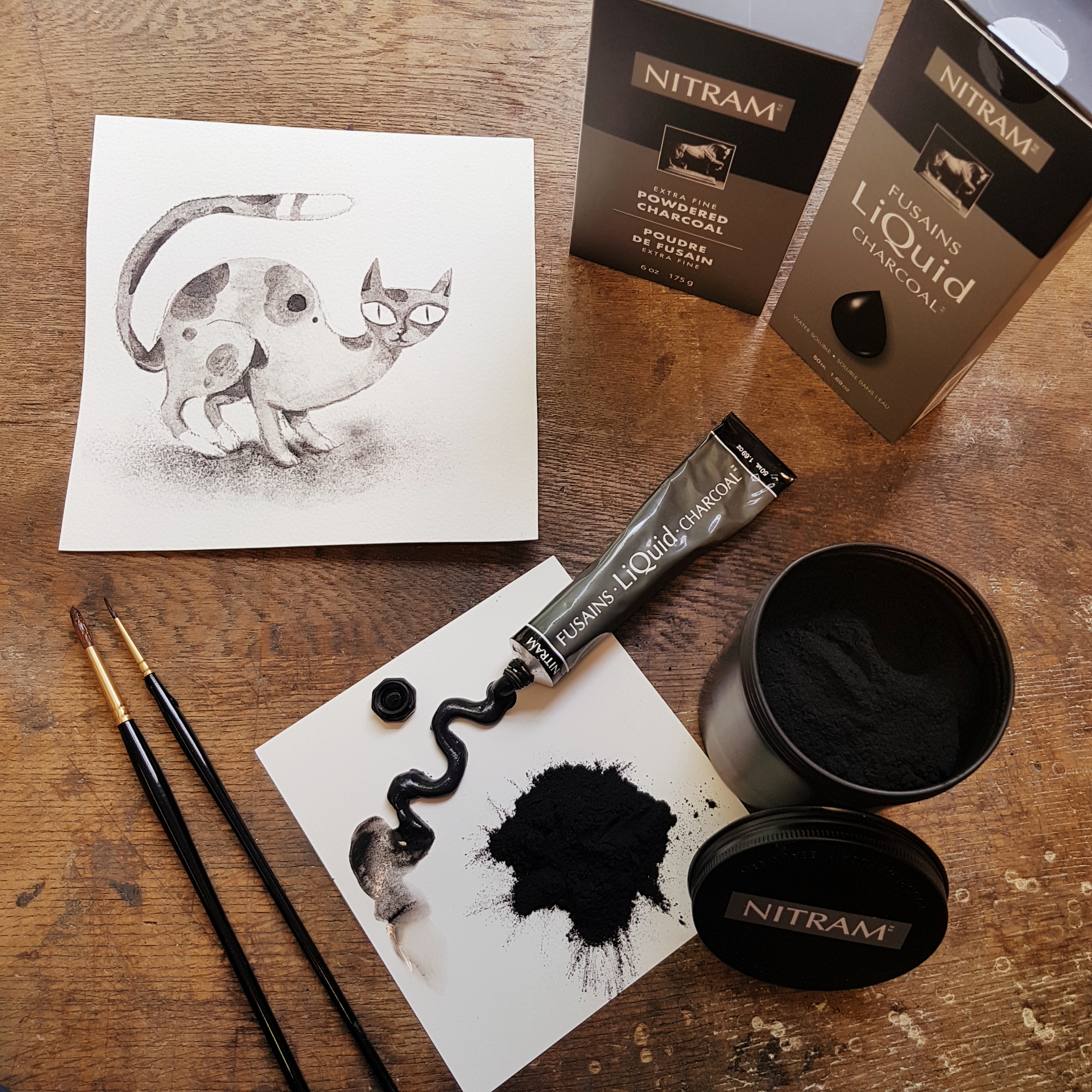
About Charcoal
Charcoal is made by slowly burning wood at a high temperature which results in the dark bold carbon sticks beloved by artists. While they are often compared with graphite, there are many advantages to using charcoal: it spreads on the paper effortlessly which allows the artist to produce quick drawings, it smudges easily and it has a rich matte black tone compared to the shininess of graphite.
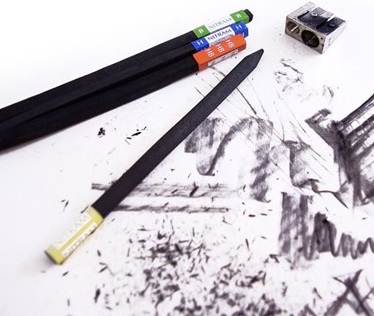
Nitram uses wood that is neither willow or vine (commonly used by other manufacturers). Their charcoal is stronger and more resistant to breaking. They usually come wrapped in paper to keep hands clean and artwork smudge-free and are available in grades from H to B. You can buy slim batons for precision, thick blocks for covering large areas and now they are available in liquid and powdered form too.
Powdered Charcoal
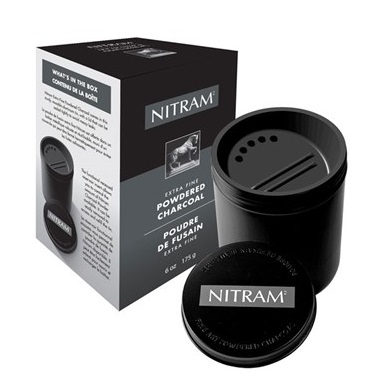
The powdered charcoal comes in a reusable tin and includes a handy recessed reservoir for pouring and keeping dust to a minimum. The particles are small and uniform and have the deepest, richest black tones an artist could dream of. You can apply them with a brush, a paper stump and by hand. Here are some examples of the various applications possible:
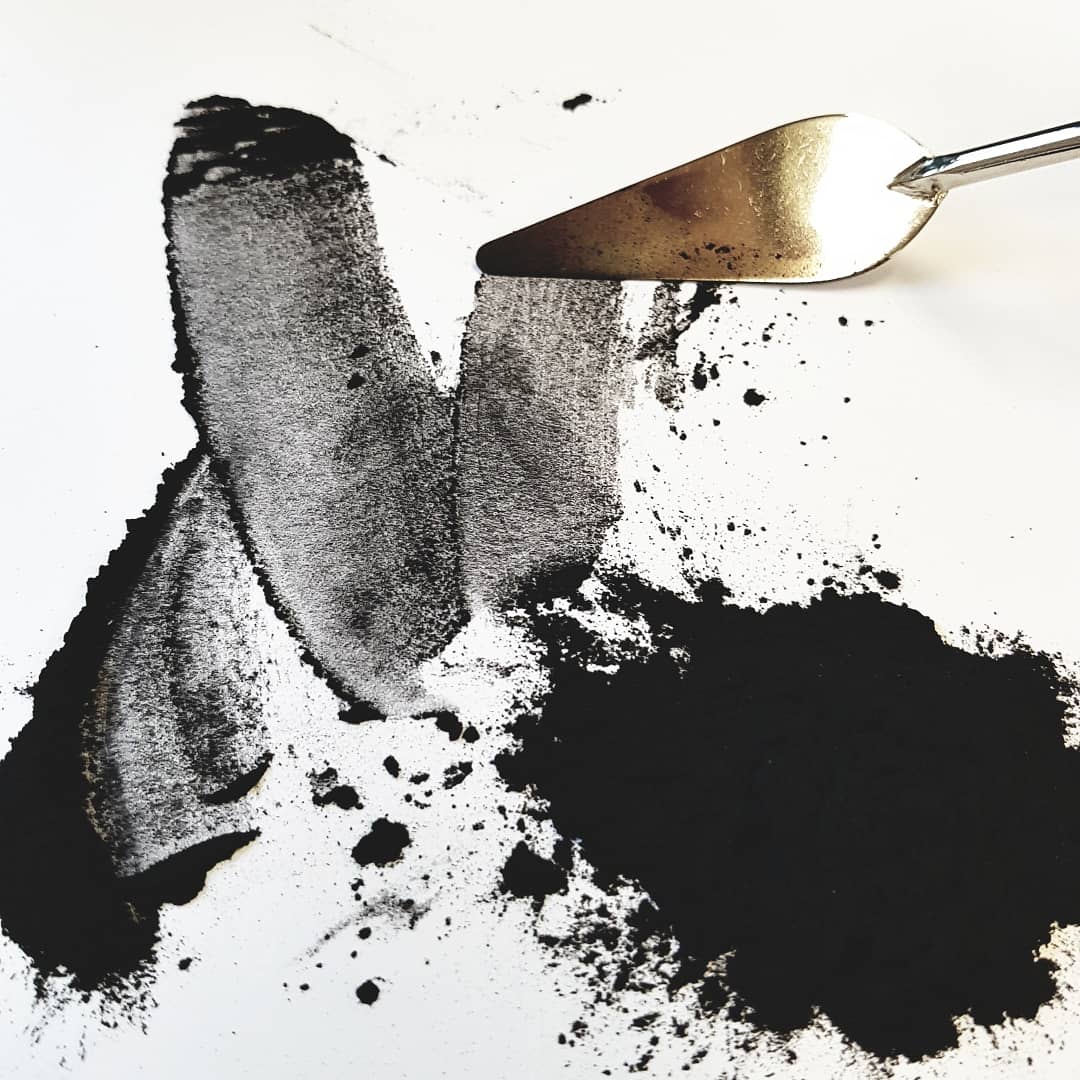
Nitram Powdered Charcoal applied with palette knife (above) on smooth drawing paper - the particles are soft and velvety and the application is soft and uniform. A palette knife can also come handy for lifting the product out of the tin and for scraping.
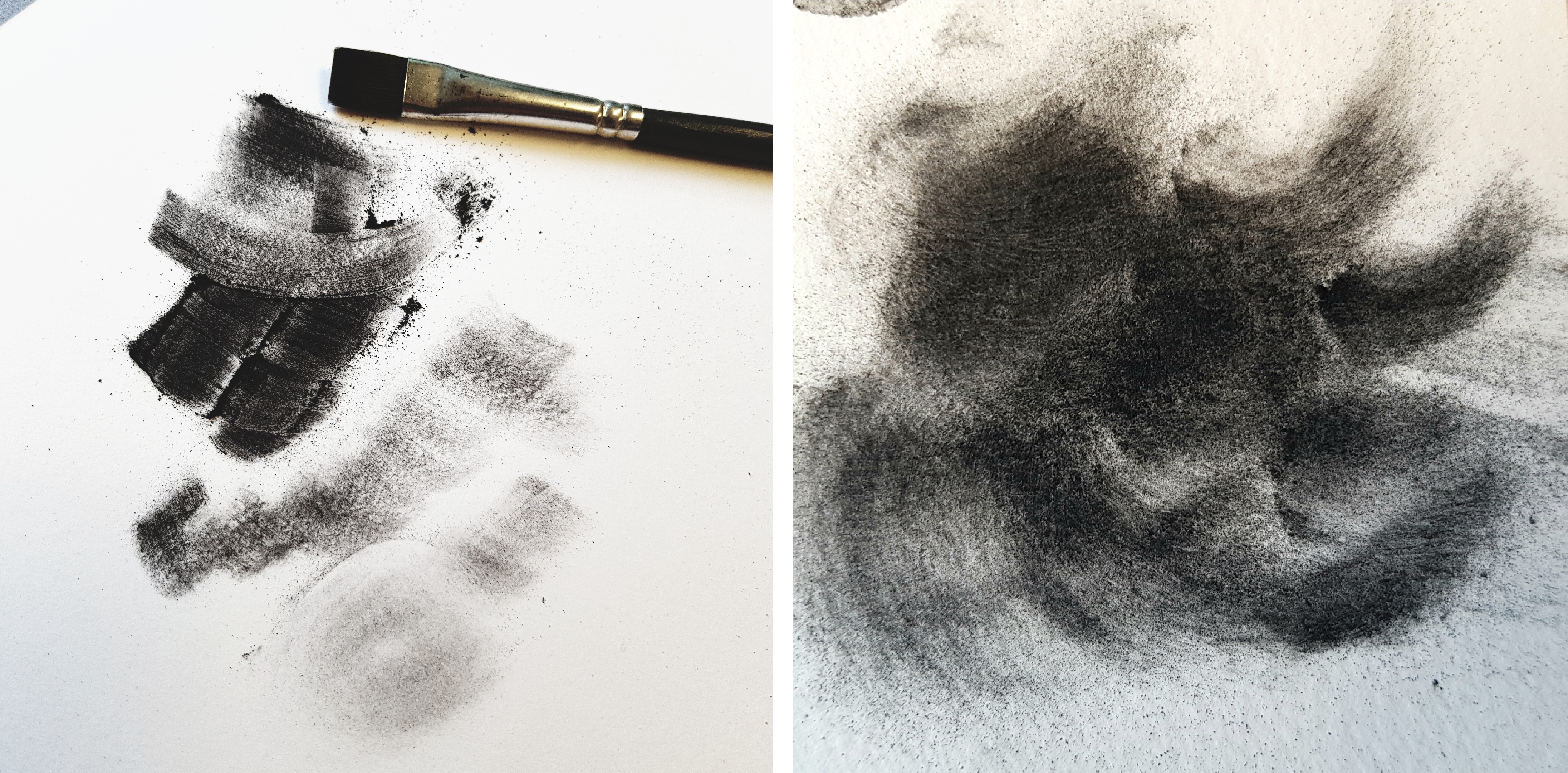
Powdered Charcoal applied with a brush (above) - I was able to achieve a good range of values from the lightest to the darkest, depending on how much product I used and how hard I pressed down the brush. I found that I needed to dip my brush quite often as the paper took it quite readily. Additionally, the softer the brush was, the less charcoal powder it picked up. You can use this to your advantage and create soft, light areas and gradually add darkness with stronger tools.
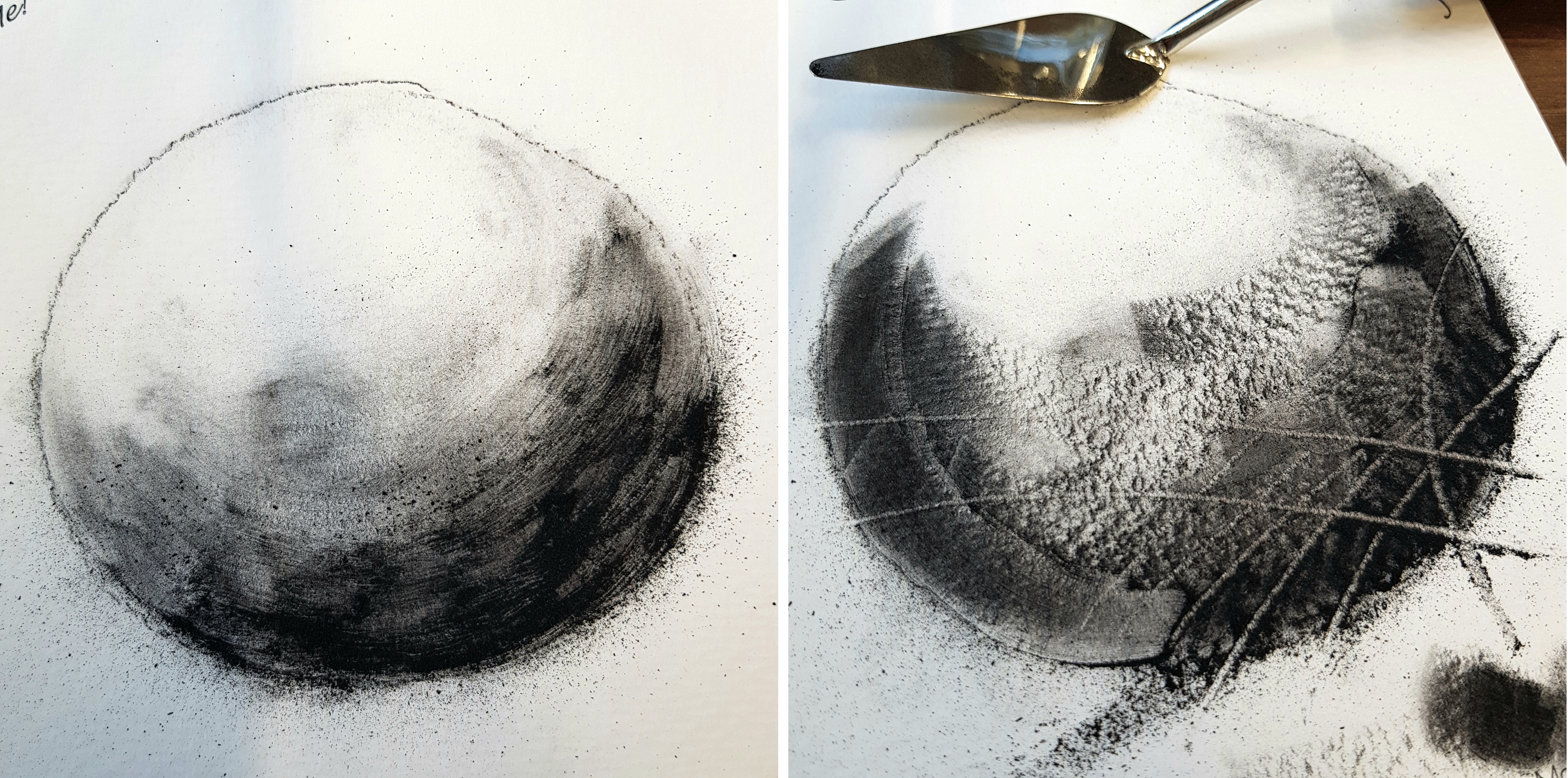
For the next test I used smooth drawing paper (on left) and rough watercolour paper (on right) to compare the powder's behaviour on the different surfaces. On the smooth paper the brush strokes and the individual particles were much more visible and this created some interesting stripy effects. Textured paper is generally more suitable for charcoal as the particles attach themselves to the surface more easily. As you can see on the picture, the powder settled in the dents and left the hills white which reminded me of granulating watercolour. You can also easily scrape the powder away with a palette knife or any sharp object you have at hand.
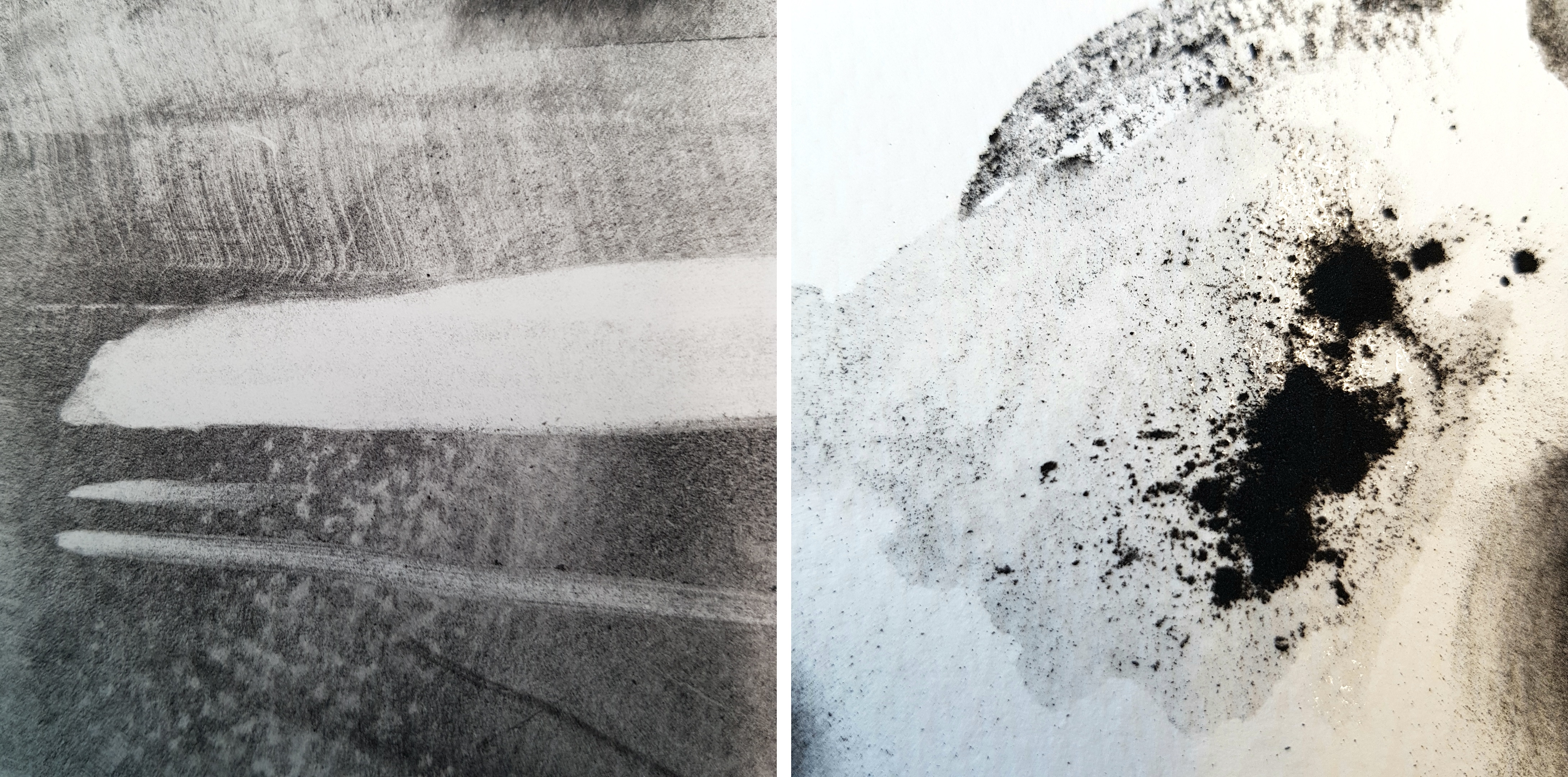
I went ahead and did two more tests: lifting the powder from the paper and dropping it onto a wet surface. As you can see on the picture (on left), by using a kneaded eraser, the powder lifts completely and reveals the white surface underneath. Kneaded or otherwise called putty erasers are easily shaped into smaller pieces for precision lifting. Dropping the pigment onto a wet surface is a watercolour technique and I used it to test the water-solubility of the charcoal powder. While you can mix the powder to create a rough paste and apply it that way, the dry powder did not show any signs of spreading or dissolving when dropped onto the wet paper.
Liquid Charcoal
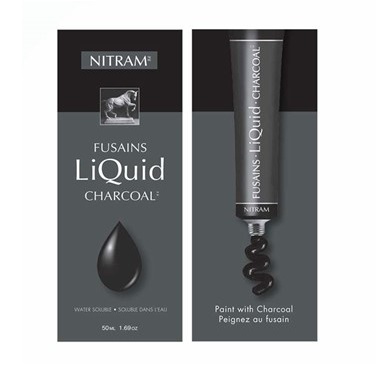
Nitram's water-soluble Liquid Charcoal comes in a tube and it is as thick as oil paint. You can easily dilute it with water to create a range of values and use it like watercolour. It can also be used undiluted. You can apply it by hand or by using a brush and other painting tools. I tested this product with the help of my colleague Victoria Homewood.
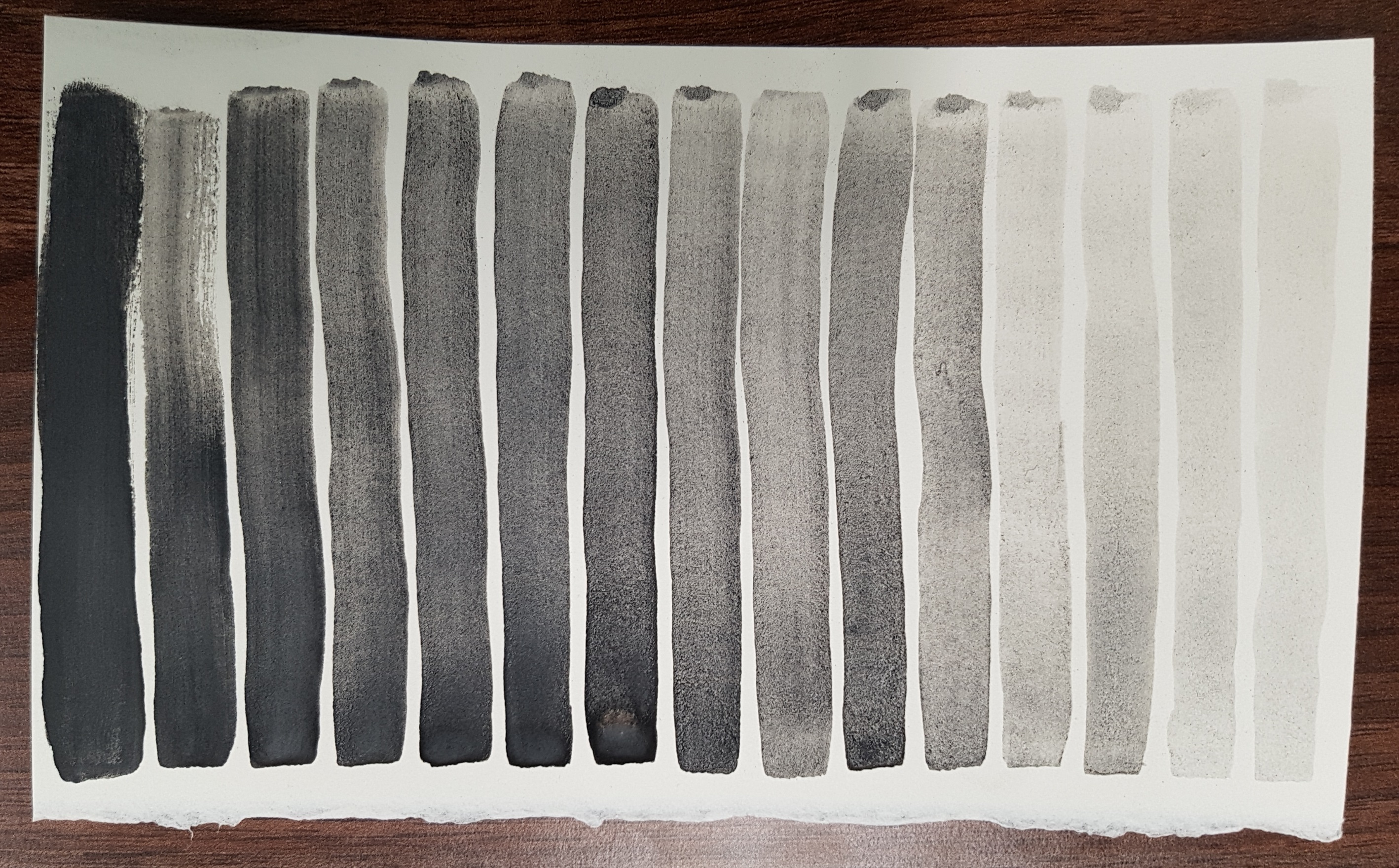
Vic's first test was a value test. As you can see on the image, the charcoal is really dark and matte straight from the tube. By adding more and more water, the mixture turns into velvety greys and the grains become more visible, much like what you can expect from granulating watercolour paint.
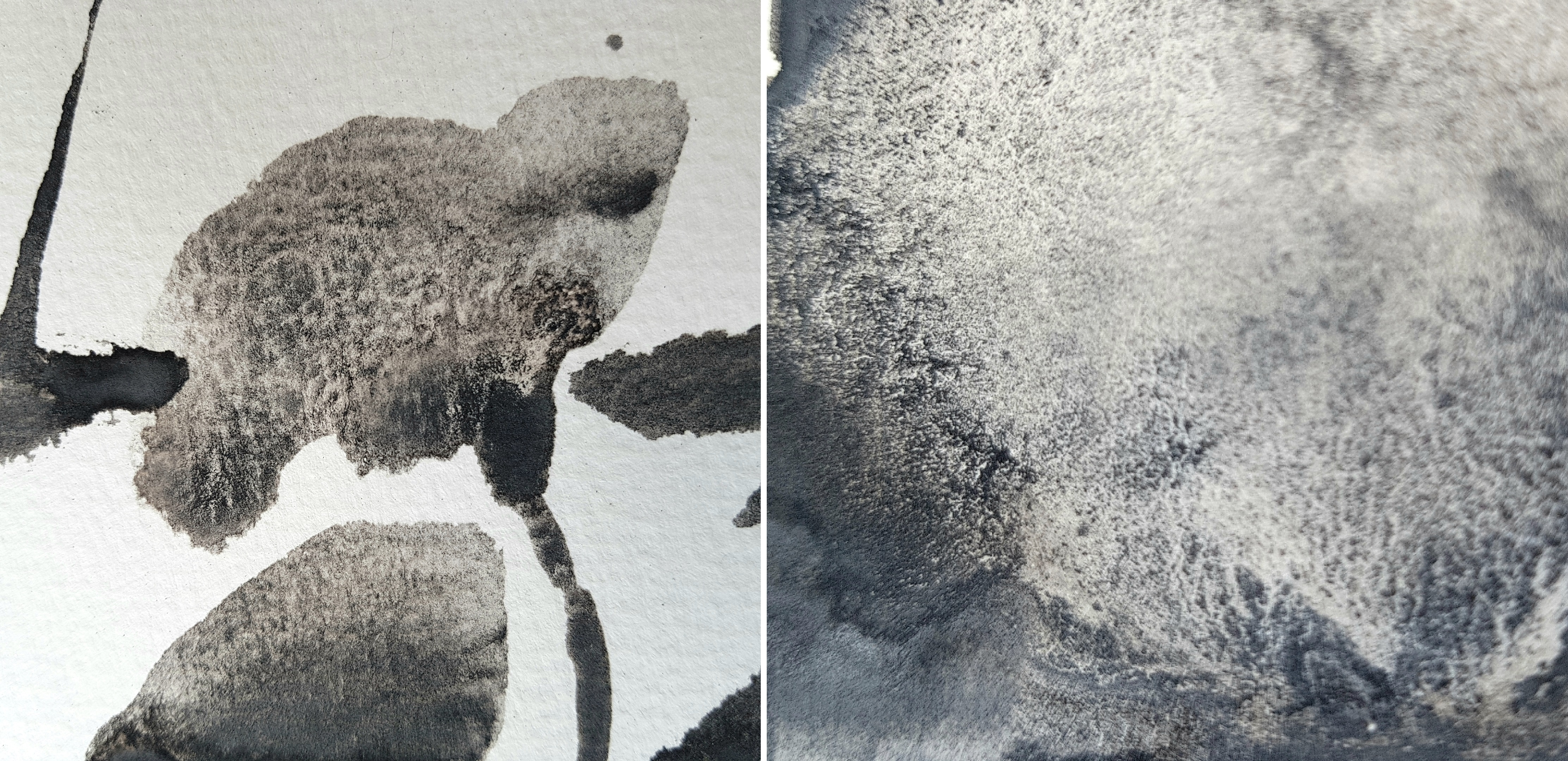
Some further tests (above) to experiment with granulation. The particles spread on the watercolour paper beautifully, revealing blue and brown undertones. The graininess of the charcoal mixture on these images reminded me of Indian ink that has very similar properties when diluted so that's what I tested next.
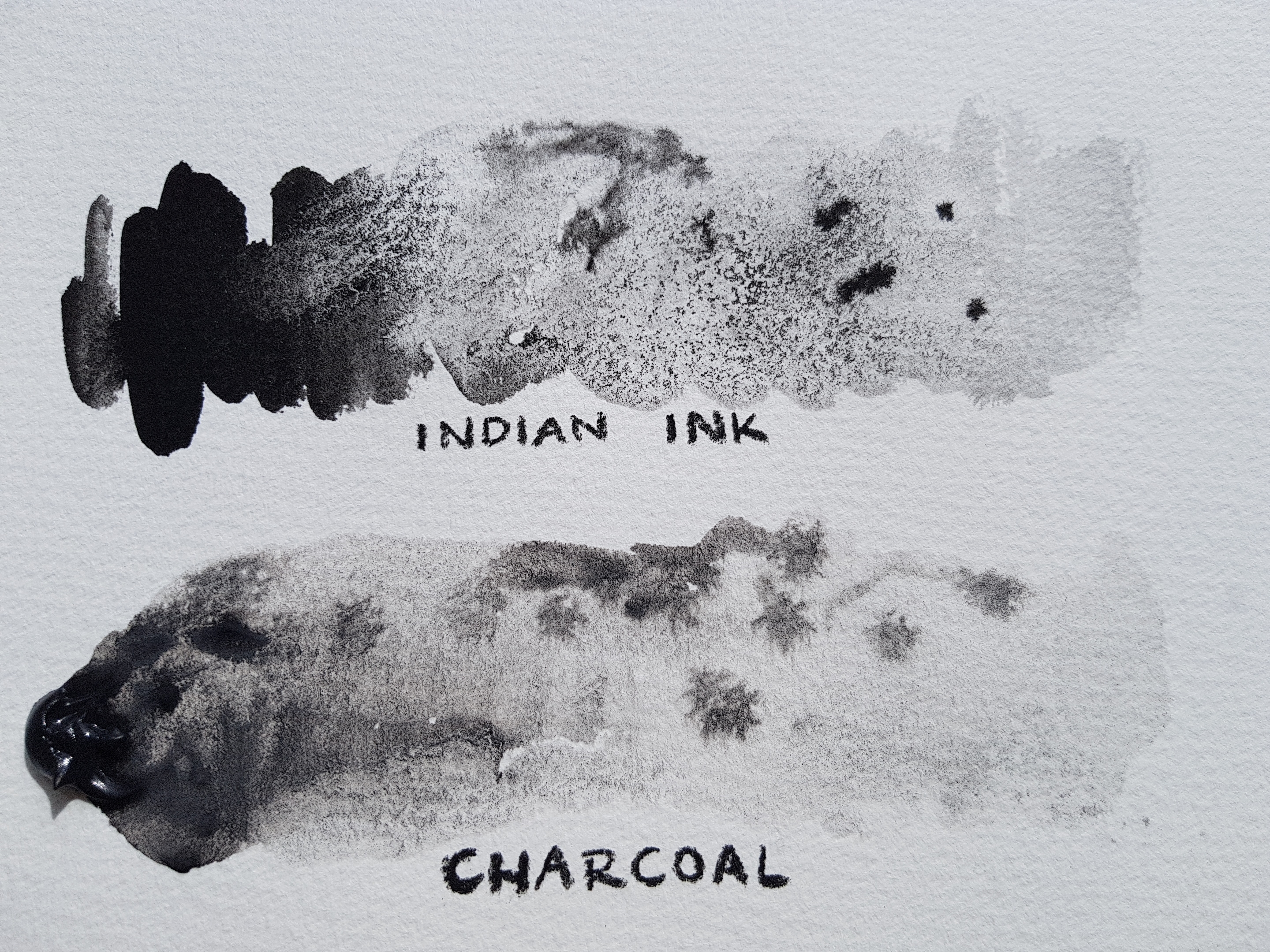
To my surprise, when compared to Indian ink, the charcoal mixture seemed a lot smoother and had a more uniform flow. The Indian ink had larger particles that tended to flow with the water while the charcoal paste behaved more like watercolour paint: it spread much more evenly and resulted in a softer texture.
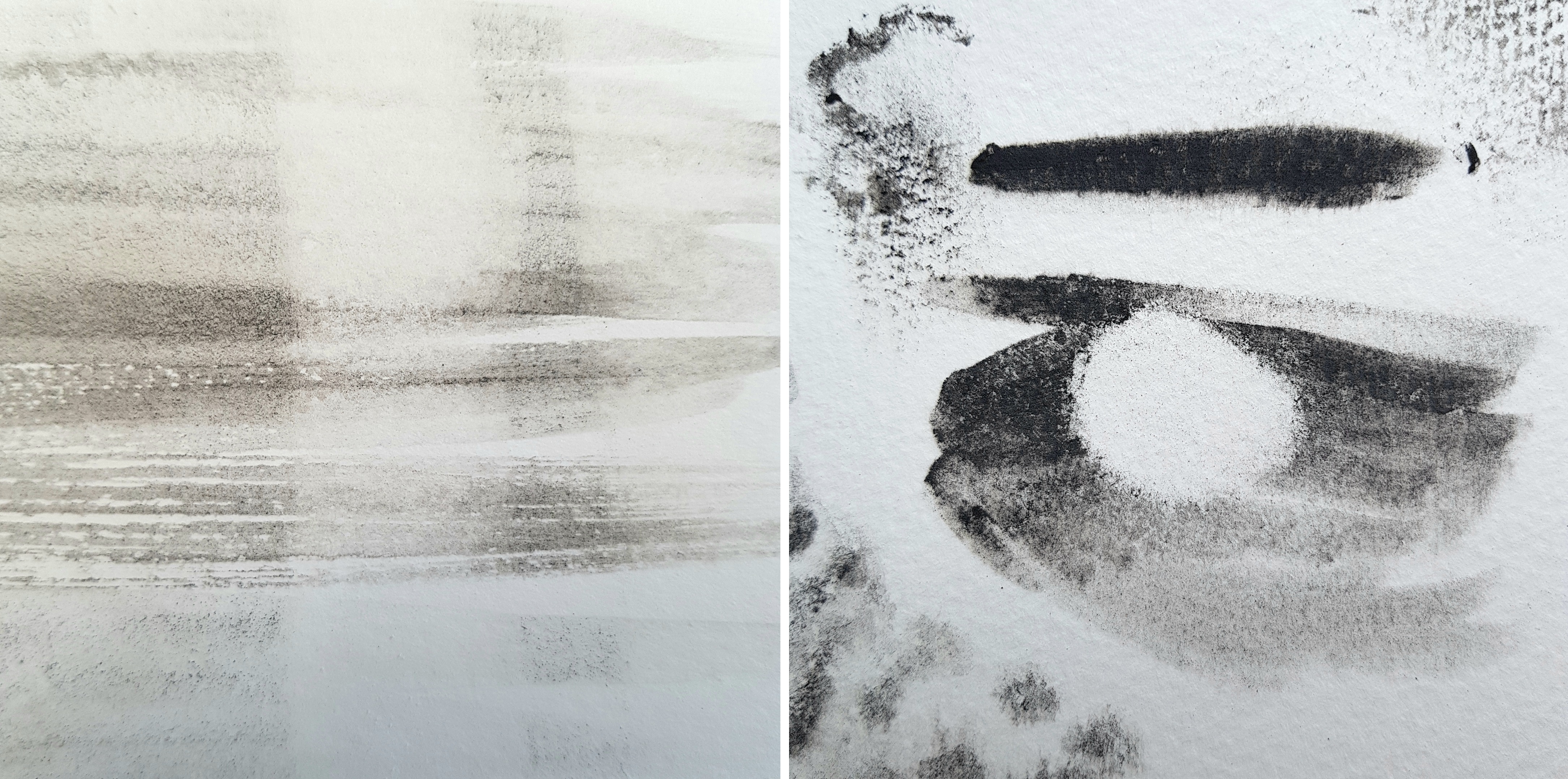
Next up was lifting. The image on the left shows lifting dry with a kneaded eraser. I found that lighter areas lift easily, however, the eraser could not lift where the paste was applied more generously. For those areas I recommend lifting with water (on right) as the paste lifts completely without trying too hard and it doesn't stain the paper.
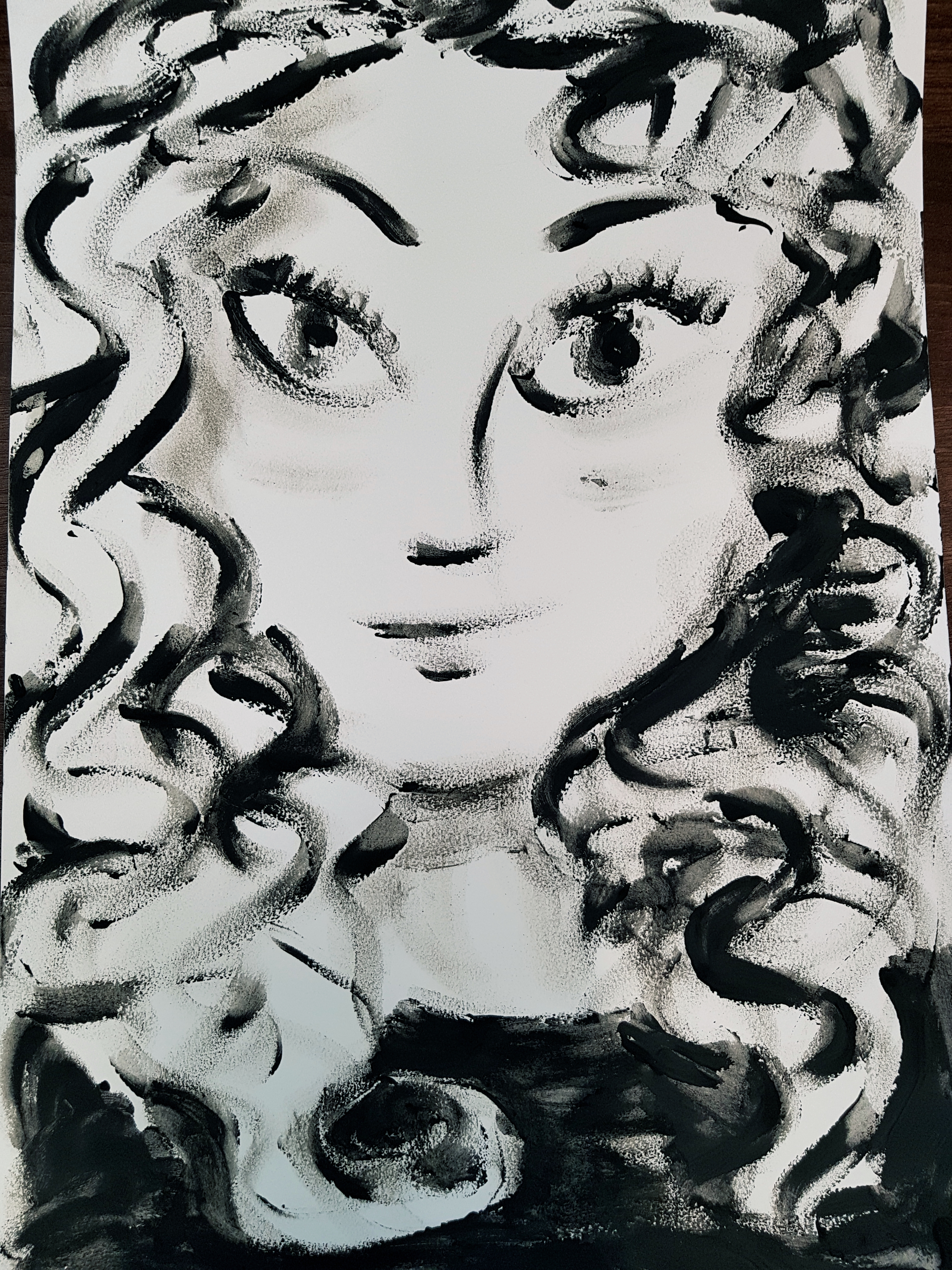
For the drawing on the left I used the charcoal paste undiluted and my fingers. I found the paste too thick for watercolour brushes, although, no doubt you could create amazing marks with hog brushes. I loved this technique as it allowed me to loosen up and the full A3 drawing took less than 30 minutes which is always a plus. The paste dried very quickly and I could use my partially drying fingers to create lighter marks for shading.
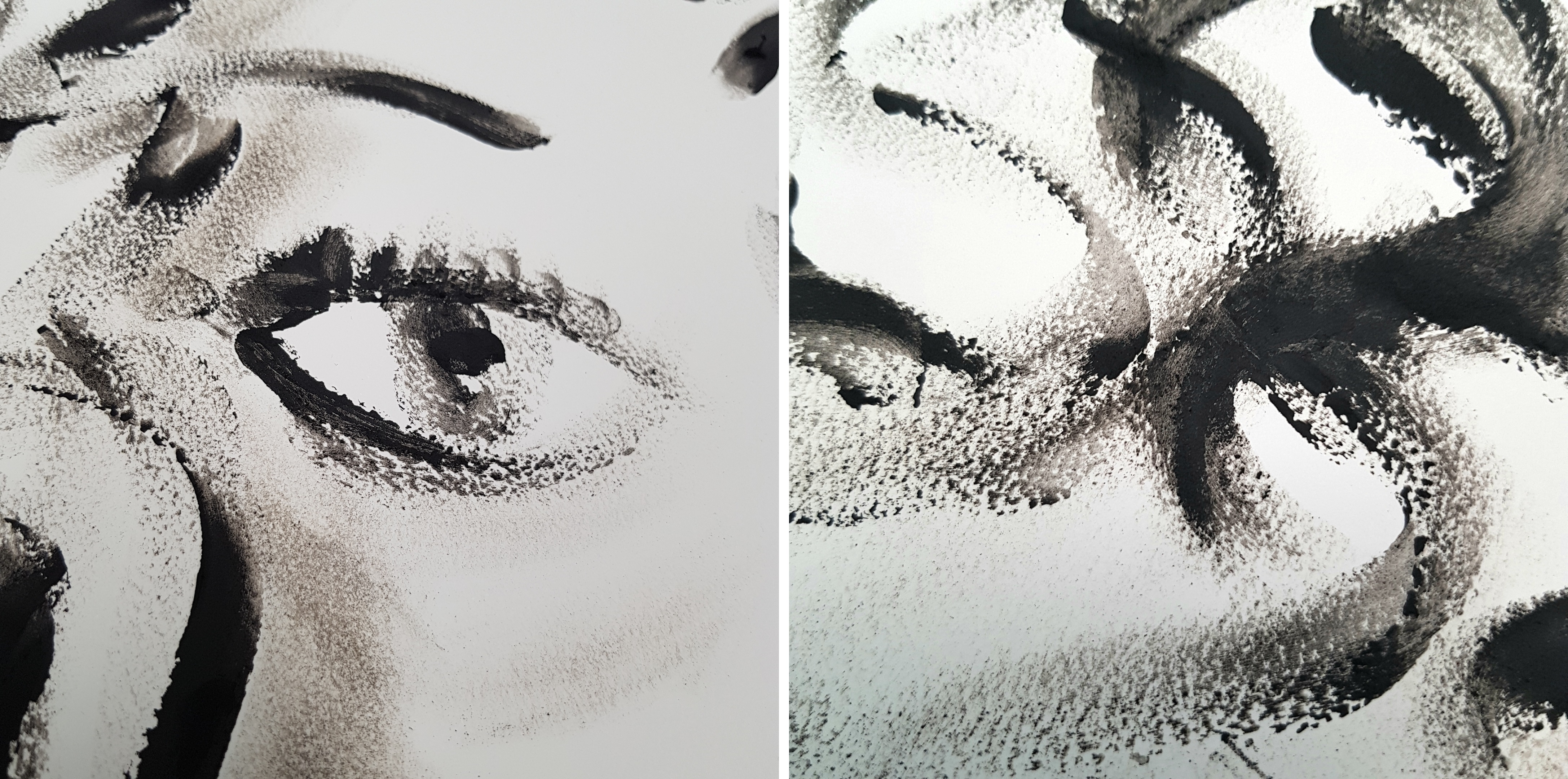
When looking at the details closely, you can see the fine texture of the smooth drawing paper and also the different values you can create, even without added water.
Combining Powdered & Liquid Charcoal
For my final image I decided to combine the two products in one painting. It wouldn't be me without a cat so naturally I drew up a rough sketch of a cat with a charcoal pencil. I then applied a light wash of diluted charcoal paste, leaving some areas white. I kept dropping in charcoal paste to dissolve on the wet surface and I added the spots in layers. While I was using the paste like watercolour, it all dried quicker and I didn't have to wait for it to dry completely before I could go on to the next layer. I loved the colour too, it was a neutral grey with loads of granulation. When I was happy with the cat, I added the charcoal powder underneath which settled nicely in the dents.
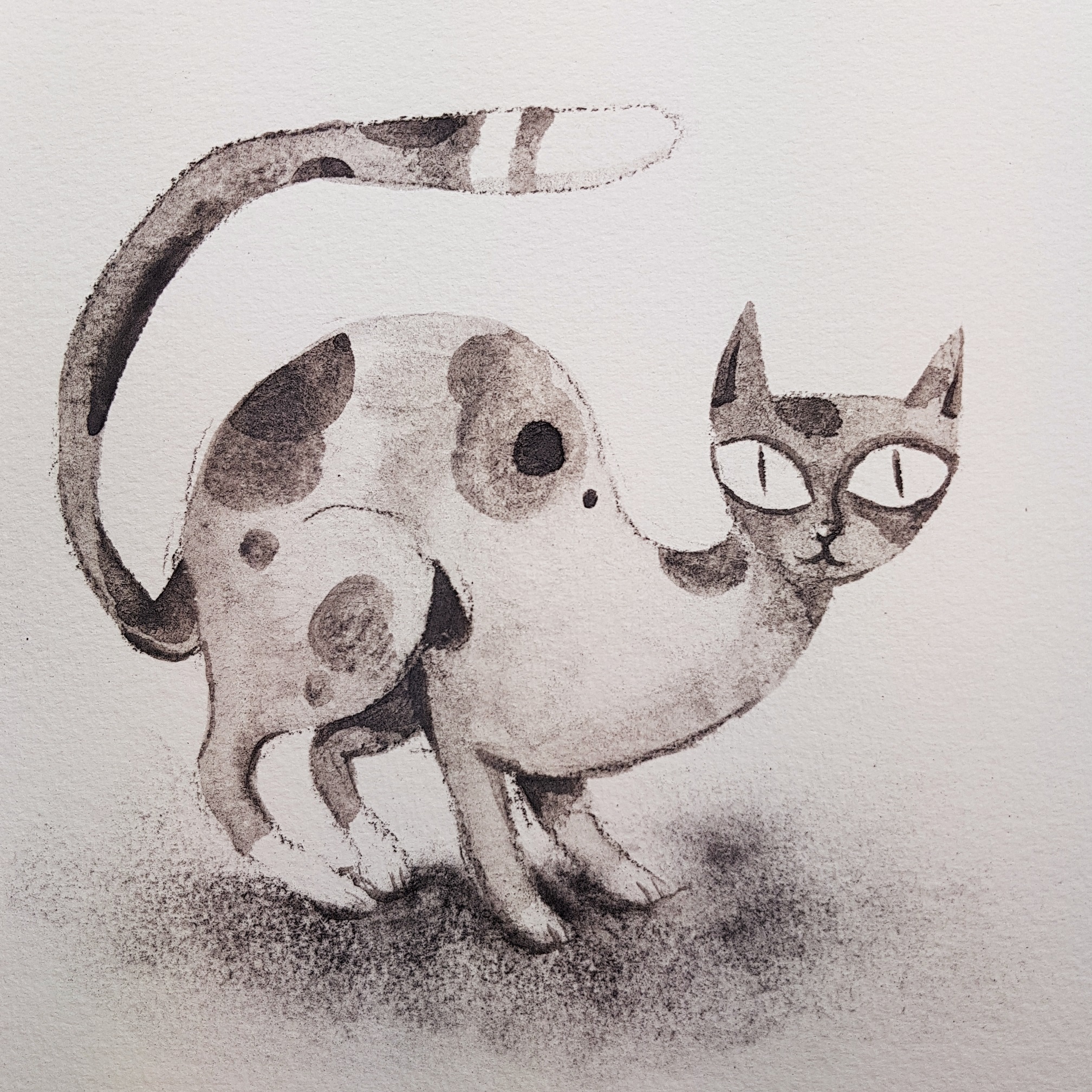
We hope you enjoyed this blog post and that you got excited to try Nitram's new products whether your primary medium is charcoal or not. It is a versatile and playful medium and it allows you to be experimental and intuitive. You can buy all art materials mentioned in this article on our website at www.lawrence.co.uk, in our shop on Portland Road, Hove, or by calling us on 01273 260260 ext.1. You can also follow me on Instagram at @judycsiky.






